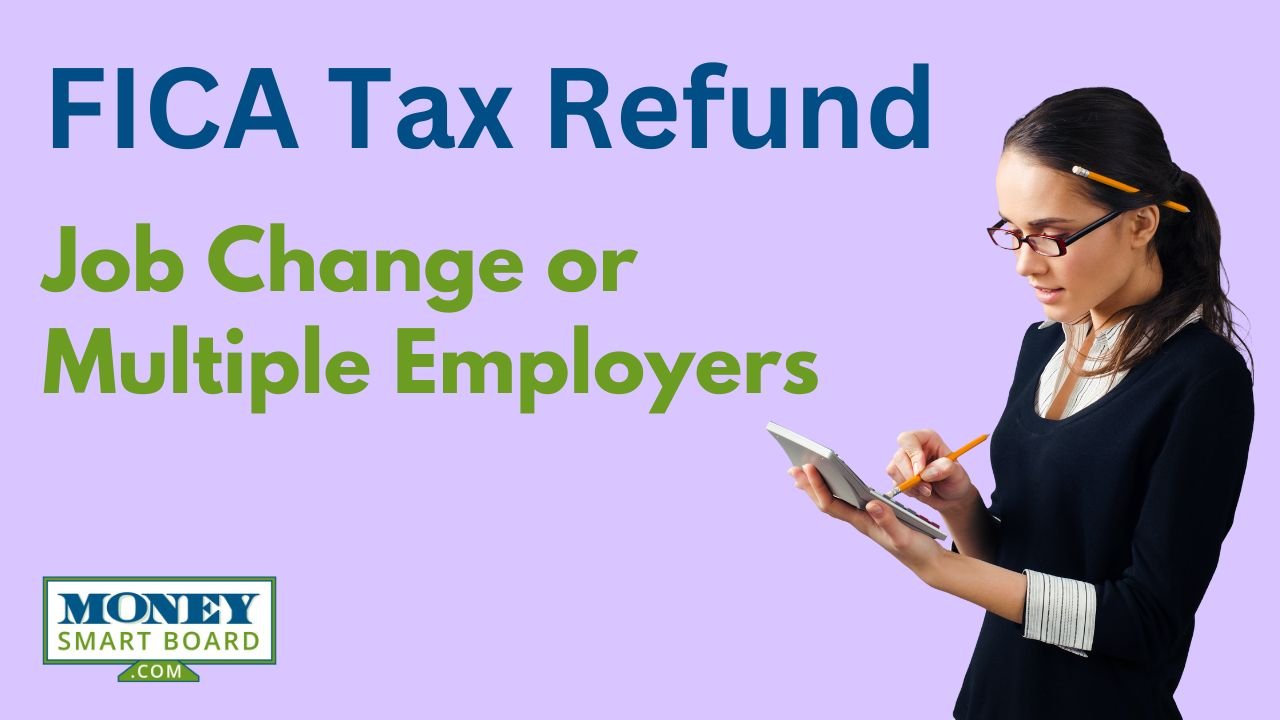
Understanding Required Minimum Distributions & Advanced Tax Strategies For RMD's
A required minimum distribution (RMD) is the amount that the IRS requires you to take out of your retirement account each year when you hit a certain age or when you inherit a retirement account from someone else. It’s important to plan tax-wise for these distributions because they can substantially increase your tax liability in a given year;
Understanding Required Minimum Distributions & Advanced Tax Strategies For RMD’s
A required minimum distribution (RMD) is the amount that the IRS requires you to take out of your retirement account each year when you hit a certain age or when you inherit a retirement account from someone else. It’s important to plan tax-wise for these distributions because they can substantially increase your tax liability in a given year; consequentially, not distributing the correct amount from your retirement accounts will invite huge tax penalties from the IRS. Luckily, there are advanced tax strategies that can be implemented to help reduce the tax impact of these distributions, as well as special situations that exempt you from having to take an RMD.
Age 72
LAW CHANGE: There were changes to the RMD age when the SECURE Act was passed into law on December 19, 2019. Prior to the law change, you were required to start taking RMD’s in the calendar year that you turned age 70 1/2. For anyone turning age 70 1/2 after December 31, 2019, their RMD start age is now delayed to age 72.
The most common form of required minimum distribution is age 72. In the calendar year that you turn 72, you are required to take your first distribution from your pretax retirement accounts.
The IRS has a special table called the “Uniform Lifetime Table”. There is one column for your age and another column titled “distribution period”. The way the table works is you find your age and then identify what your distribution period is. Below is the calculation step by step:
1) Determine your December 31 balance in your pre-tax retirement accounts for the previous year end
2) Find the distribution period on the IRS uniform lifetime table
3) Take your 12/31 balance and divide that by the distribution period
4) The previous step will result in the amount that you are required to take out of your retirement account by 12/31 of that year
Example: If you turn age 72 in March of 2023, you would be required to take your first RMD in that calednar year unless you elect the April 1st delay in the first year. After you find your age on the IRS uniform lifetime table, next to it you will see a distribution period of 25.6. The balance in your traditional IRA account on December 31, 2018 was $400,000, so your RMD would be calculated as follows:
$400,000 / 25.6 = $15,625
Your required minimum distribution amount for the 2023 tax year is $15,625. The first RMD will represent about 3.9% of the account balance, and that percentage will increase by a small amount each year.
RMD Deadline
There are very important dates that you need to be aware of once you reach age 72. In most years, you have to make your required minimum distribution prior to December 31 of that tax year. However, there is an exception for the year that you turn age 72. In the year that you turn 72, you have the option of taking your first RMD either prior to December 31 or April 1 of the following year. The April 1 exception only applies to the year that you turn 72. Every year after that first year, you are required to take your distribution by December 31st.
Delay to April 1st
So why would someone want to delay their first required minimum distribution to April 1? Since the distribution results in additional taxable income, it’s about determining which tax year is more favorable to realize the additional income.
For example, you may have worked for part of the year that you turned age 72 so you’re showing earned income for the year. If you take the distribution from your IRA prior to 12/31 that represents more income that you have to pay tax on which is stacked up on top of your earned income. It may be better from a tax standpoint to take the distribution in the following January because the amount distributed from your retirement account will be taxed in a year when you have less income.
Very important rule:
If you decide to delay your first required minimum distribution past 12/31, you will be required to take two RMD‘s in that following year.
Example: I retire from my company in September 2023 and I also turned 72 that same year. If I elect to take my first RMD on February 1, 2024, prior to the April 1 deadline, I will then be required to take a second distribution from my IRA prior to December 31, 2024.
If you are already retired in the year that you turn age 72 and your income level is going to be relatively the same between the current year and the following year, it often makes sense to take your first RMD prior to December 31st, so are not required to take two RMD‘s the following year which can subject those distributions to a higher tax rate and create other negative tax events.
IRS Penalty
If you fail to distribute the required amount by the given deadline, the IRS will be kind enough to assess a 50% penalty on the amount that you should have taken for your required minimum distribution. If you were required to take a $14,000 distribution and you failed to do so by the applicable deadline, the IRS will hit you with a $7,000 penalty. If you make the distribution, but the amount is not sufficient enough to meet the required minimum distribution amount, they will assess the 50% penalty on the shortfall instead. Bottom line, don’t miss the deadline.
Exceptions If You Are Still Working
There is an exception to the 72 RMD rule. If your only retirement asset is an employer sponsored retirement plan, such as a 401(k), 403(b), or 457, as long as you are still working for that employer, you are not required to take an RMD from that retirement account until after you have terminated from employment regardless of your age.
Example: You are age 73 and your only retirement asset is a 401(k) account with your current employer with a $100,000 balance, you will not be required to take an RMD from your 401(k) account in that year even though you are over the age of 72.
In the year that you terminate employment, however, you will be required to take an RMD for that year. For this reason, be very careful if you’re working over the age of 72 and leave employment in late December. Your retirement plan provider will have a very narrow window of time to process your required minimum distribution prior to the December 31st deadline.
This employer sponsored retirement plan exception only applies to balances in your current employer’s retirement plan. You do not receive this exception for retirement plan balances with previous employers.
If you have retirement account such as IRA’s or other retirement plan outside of your current employer’s plan, you will still be required to take RMD’s from those accounts, even though you are still working.
Advanced Tax Strategies
There are two advanced tax strategies that we use when individuals are age 72 and still working for a company that sponsors are qualified retirement plan.
It’s not uncommon for employees to have a retirement plans with their current employer, a rollover IRA, and some miscellaneous balance in retirement plans from former employers. Since you only have the exception to the RMD within your current employers plan, and most 401(k), 403(b), and 457 plans accept rollovers from IRAs and other qualified plans, it may be advantageous to complete rollovers of all those retirement accounts into your current employer’s plan so you can completely avoid the RMD requirement.
Strategy number two. If you are still working and you have access to an employer sponsored plan, you are usually able to make employee contributions pre-tax to the plan. If you are required to take a distribution from your IRA which results in taxable income, as long as you are not already maxing out your employee deferrals in your current employer’s plan, you can instruct payroll to increase your contributions to the plan to reduce your earned income by the amount of the required minimum distribution coming from your other retirement accounts.
Example: You are age 72 and working part time for an employer that gives you access to a 401(k) plan. Your 401(k) has a balance of $20,000 with that employer, but you also have a Rollover IRA with a balance of $200,000. In this case, you would not be required to take an RMD from your 401(k) balance, but you would be required to take an RMD from your IRA which would total approximately $7,500. Since the $7,500 will represent additional income to you in that tax year, you could turn around and instruct the payroll company to take 100% of your paychecks and put it pre-tax into your 401(k) account until you reach $7,500 which would wipe out the tax liability from the distribution that occurred from the IRA.
Or, if you have a spouse that still working and they have access to a qualified retirement plan, the same strategy can be implemented. Additionally, if you file a joint tax return, it doesn’t matter whose retirement plan it goes into because it’s all pre-tax at the end of the day.
5% or More Owner
Unfortunately, I have some bad news for business owners. If you are a 5% or more owner of the company, it does not matter whether or not you are still working for the company, you are required to take an RMD from the company’s employer sponsored retirement plan regardless. The IRS is well aware that the owner of the business could decide to work for two hours a week just to avoid required minimum distributions. Sorry entrepreneurs.
A Spouse That Is More Than 10 Years Younger
I mentioned above that the IRS has a uniform lifetime table for calculating the RMD amount. If your spouse is more than 10 years younger than you are, there is a special RMD table that you will need to use called the “joint life table” with a completely different set of distribution periods, so make sure you’re using the correct table when calculating the RMD amount.
Charitable contributions
There is also an advanced tax strategy that allows you to make contributions to charity directly from your IRA and you do not have to pay tax on those disbursements. The special charitable distributions from IRA’s are only allowed for individuals that are age 72 or older. If you regularly make contributions to a charity, church, or not for profit, or if you do not need the income from the RMD, this may be a great strategy to shelter what otherwise would have been more taxable income. There are a lot of special rules surrounding how these charitable contributions work. For more information on this strategy see the following article:
Lower Your Tax Bill By Directing Your Mandatory IRA Distributions To Charity
Roth IRA’s
You are not required to take RMD‘s from Roth IRA accounts at age 72, this is one of the biggest tax advantages of Roth IRAs.
Inherited IRA
When you inherit an IRA from someone else, those IRAs have their own set of required minimum distribution rules which vary from the rules at the age 72. The SECURE Act that was passed in 2019 split non-spouse beneficiaries of IRA into two categories. For individuals that inherited retirement accounts prior to December 31, 2019, they are still able to stretch the RMD over their lifetime and the required minimum distributions must begin by December 31st of the year following the decedent date of death. For individuals that inherited a retirement account after December 31, 2019, the New 10 Rule replaced the stretch option and no RMDs are required for non-spouse beneficiaries. For the full list of rule, deadlines, and tax strategies surrounding inherited IRA’s see the articles listed below:
About Michael……...
Hi, I’m Michael Ruger. I’m the managing partner of Greenbush Financial Group and the creator of the nationally recognized Money Smart Board blog . I created the blog because there are a lot of events in life that require important financial decisions. The goal is to help our readers avoid big financial missteps, discover financial solutions that they were not aware of, and to optimize their financial future.
How Are Trustee Commissions Calculated & Taxed?
If you are the trustee of a trust, in most cases, you are allowed to be paid a commission from the trust assets. States have different rules with regard to the trustee commission calculation. This article will assist you in understanding how the commission is calculated, how the payments are taxed, the rules for commissions not taken in past years, and how
If you are the trustee of a trust, in most cases, you are allowed to be paid a commission from the trust assets. States have different rules with regard to the trustee commission calculation. This article will assist you in understanding how the commission is calculated, how the payments are taxed, the rules for commissions not taken in past years, and how the trust commissions are split between multiple trustees.
Trust Document
The trust document usually has a special section that addresses commissions paid to the trustee. It’s common for the trust document to include language that states that “the trustee shall receive annual commissions in the same manner and at the same rates as prescribed for testamentary trustees under the laws of the State of (Name of State)”.
For New York the formula is as follows:
1.05% of the first $400,000
0.45% of the next $600,000
0.30% of the rest
For example, a trust has $500,000 in assets as of December 31st, the calculation would be as follows:
$400,000 x 1.05% = $4,200
$100,000 x 0.45% = $ 450
Total Commission: $4,650
The trustee would be eligible to receive $4,650 from the trustee assets as their commission for the year.
How Are Commissions Taxed?
Commissions paid by the trust to the trustee are reported as income by the trustee on their personal tax return. The trust deducts the commission paid as an expense. We frequently receive the question, “does the trust have to issue a 1099-MISC tax form for the commission that was paid to the trustee?” Many tax professionals take the position that a 1099-MISC is not required to be issued because serving as trustee does not meet the definition of a “trade or business” which is the prerequisite for issuing a 1099-MISC tax form.
More Than 1 Trustee
What happens where there is more than 1 trustee? Do the trustees have to split the commission equally? The answer is “it depends”. It depends on the size of the trust and the number of trustees.
Again, I’m referencing New York State law her. The rules will vary for by state. For trusts with under $100,000 in assets, each trustee gets the full commission. If a trust has $80,000 in assets and there are 3 trustees, each trustee would receive $840 ($80,000 x 1.05%).
For trusts with assets between $100,000 – $400,000, if there are one or two trustees, each trustee is entitled to a full commission. If there are 3 or more trustees within this asset range, the single trustee commission is divided equally between the trustees. I don’t necessary understand the logic behind if there are two trustees the commission is doubled but if there are 3 trustees, a single commission payment is split between the trustees. But that’s how the law is written.
For trusts with more than $400,000 in assets, if there are 1 – 3 trustees, each trustee is entitled to the full commission amount. If there are more than 3 trustees, again, the commission is split equally amongst the trustees.
Can You Waive The Commission Payment?
As the trustee, you can voluntarily waive the commission payment. The money simply remains in the trust. Why would a trustee do this? Some trustees just don’t need the income. In some situations, the parents will setup a trust, they have more than one child, but only one of the children serves as trustee. The child that serves as trustee may decide to waive the commission payment to avoid conflict with their siblings about “taking money from mom and dad’s trust”.
Another reason for waiving the commission payment is the trustee may purposefully want to realize that income at a later date. Whatever the reason, I just wanted you to know that waiving the commission payment is an option.
Back Payments
We will frequently get the following question:
“I have been the trustee of this trust for the past 10 year but I have never taken a commission. Am I still entitled to the trustee commissions for past 10 years even though I did not take them?”
The answer is “yes”. The trustee is still entitled to receive those commissions for past years even though they did not take them in the year that they were due. The trustee would just need to be able to produce the records necessary to calculation the trustee commission for all of the past years.
In these cases, remember, commission payments to the trustees are taxed at ordinary income tax rates to the trustee. If you decide to “catch-up” on past commissions that are due to you and you receive $30,000 in trustee commissions in a single tax year that could bump you up into a higher tax bracket. It may make more sense from a tax standpoint to spread those past commission payments over the course of the next few years to reduce the tax hit.
Disclosure: This article is for educational purposes only. For legal advice, please consult an attorney.
About Michael……...
Hi, I’m Michael Ruger. I’m the managing partner of Greenbush Financial Group and the creator of the nationally recognized Money Smart Board blog . I created the blog because there are a lot of events in life that require important financial decisions. The goal is to help our readers avoid big financial missteps, discover financial solutions that they were not aware of, and to optimize their financial future.
How Is Child Support & Alimony Calculated In New York?
For purposes of child support, either parent can be named the custodial parent by a Court. For the purposes of this article we will assume that the mother is the custodial parent and will be receiving the child support and alimony payments. However, fathers who have custody can also use this as a guide.
For purposes of child support, either parent can be named the custodial parent by a Court. For the purposes of this article we will assume that the mother is the custodial parent and will be receiving the child support and alimony payments. However, fathers who have custody can also use this as a guide.
How do I apply for child support?
Usually, you ask for child support in Family Court in the county where you and the child live. You can also go for child support in the county where the father lives. You are not required to have a lawyer to apply for child support but it is recommended that you consult with a divorce attorney prior to filing for support.
How is the dollar amount of child support calculated?
The Child Support Standard Act (CSSA) is the law in NYS and tells the amount of child support the father must pay. The CSSA applies to parental income up to a maximum of $181,000 (2021 limit) and the Court can apply it to income in excess of $148,000 based on certain factors. Examples of these factors are: the financial ability of the father, the lifestyle the child would have enjoyed if the parents stayed living together, and any special needs the child may have. The maximum can be adjusted periodically by the New York State legislature. The amount you get depends on what the father’s income is, what your income is, how many children you have together, and what your children’s basic needs are
The Support Magistrate will look at the information in your financial disclosure affidavit and the father’s financial disclosure affidavit, if he supplies one. The Support Magistrate might also ask you and the father to answer questions. And you and he might be asked to give the Support Magistrate other evidence of your income and expenses, such as a paystub or a W-2 statement.
Both parents’ incomes are used to figure out how much child support the father has to pay because both parents have to support their children.
This is how it is calculated:
Deduct (subtract) these things from each parent’s income:
spousal maintenance paid to a former husband or wife by court order
child support paid to other children by court order
public assistance and supplemental security income (SSI)
city taxes
social security and Medicare taxes (FICA)
Combine (add) the incomes of both parents after making those deductions, and multiply the total you get by the correct percentage:
17% for one child
25% for two children
29% for three children
31% for four children
Not less than 35% for five children or more
Divide the figure you get between both parents according to both your incomes (on a “pro rata” basis). This means that if the father earns twice as much as you, he must pay twice as much child support.
The father may also have to pay additional amounts for:
child care, if you are working or going to school.
medical care not covered by insurance
the child’s educational expenses
The parent who has health insurance must also (if reasonable) continue providing health insurance for your children. The cost of providing health insurance will be shared between yourself and the father, in proportion to your respective incomes. If neither of you has health insurance, the court will order the custodial parent (the parent with the greatest amount of custody) to apply for the state’s child health insurance plan.
When do child support payments stop?
Child support payments typically end when the child reaches age 21 or becomes emancipated. Emancipation means a child is living separately and independently from a parent, or is self –supporting. Some things that show that a child is emancipated are:
Child has completed 4 years of college education
Child has gotten married
Child is living away from home (except for living at school or college)
Child has gone into the military
Child is 17 years old and working full-time (except for summer vacation jobs)
Child willingly and fro no good reason has ended the relationship with both parents
In New York, alimony is referred to in three different ways: as alimony, spousal support, and maintenance. “Temporary maintenance” is an order that one spouse must financially support the other while the divorce is being finalized. Once the divorce is finalized, the temporary maintenance stops and the judge decides whether permanent alimony is appropriate.
How is the amount of alimony payments determined?
Unlike child support payments there really are no set guidelines for the amount and duration of alimony payments. To decide whether spousal support is appropriate, the judge will look at the needs of the spouse asking for support and whether the other spouse has the financial ability to provide financial help. For example, if your income is lower than your spouse’s but you are able to support yourself, you may not be entitled to alimony. The court will also look at other factors when making a decision about support:
the length of the marriage
each spouse’s age and health status
each spouse’s present and future earning capacity
the need of one spouse to incur education or training expenses
whether the spouse seeking maintenance is able to become self-supporting
whether caring for children inhibited one spouse’s earning capacity
equitable distribution of marital property, and
the contributions that one spouse has made as a homemaker in order to help enhance the other spouse’s earning capacity.
The court will also look to see whether the acts of one spouse have inhibited or continue to inhibit the other spouse’s earning capacity or ability to obtain employment. The most common example of this would be domestic violence. If one spouse’s abuse of the other affected that abused spouse’s ability to maintain or to get a job, the court might consider those actions in making its order. Disclosure: The information listed above is for educational purposes only. Greenbush Financial Group, LLC does not provide legal advice. For legal advice, please consult your attorney.
About Michael……...
Hi, I’m Michael Ruger. I’m the managing partner of Greenbush Financial Group and the creator of the nationally recognized Money Smart Board blog . I created the blog because there are a lot of events in life that require important financial decisions. The goal is to help our readers avoid big financial missteps, discover financial solutions that they were not aware of, and to optimize their financial future.
How is my Social Security Benefit Calculated?
The top two questions that we receive from individuals approaching retirement are:
What amount will I received from social security?
When should I turn on my social security benefits?
The top two questions that we receive from individuals approaching retirement are:
What amount will I received from social security?
When should I turn on my social security benefits?
Are you eligible to receive benefits?
As you work and pay taxes, you earn Social Security “credits.” In 2015, you earn one credit for each $1,220 in earnings—up to a maximum of four credits a year. The amount of money needed to earn one credit usually goes up every year. Most people need 40 credits (10 years of work) to qualify for benefits.
When will I begin receiving my social security benefit?
You are entitled to your full social security benefit at your “Normal Retirement Age” (NRA). Your NRA varies based on your date of birth. Below is the chart that social security uses to determine your “normal retirement age” or “full retirement age”:
For example, if you were born in 1965, your NRA would be 67. At 67, you would be eligible for your full retirement benefit.
Delayed Retirement or Early Retirement
You can claim benefits as early as age 62, but your monthly check will be cut by 25% for the rest of your life. The way the math works out, for each year you take your social security benefit prior to your normal retirement age, you benefit is permanently reduce by 6% for each year you take it prior to your NRA.
On the opposite end of that scenario, if you delay claiming past your NRA, you will get a delayed credit of approximately 8% per year plus cost of living adjustments.
There are a number of variables that factor into this decision as to when to turn on your benefit. Some of the main factors are:
Your health
Do you plan to keep working?
What is your current tax bracket?
The amount of retirement savings that you have
Income difference between spouses
What amount will I receive from social security?
Social security uses a fairly complex formula for calculating social security retirement benefits but the short version is the formula uses your highest 35 years of income. If you have less than 35 years are income, zeros are entered into the average for the number of years you are short of 35 years of income. They also apply an inflation adjustment to your annual earnings in the calculation.
You can obtain your Social Security statement by creating an account at www.ssa.gov. Your statement contains lots of valuable information, such as:
Your estimated benefit amount at full retirement age
Eligibility for benefits
A detailed history of how much you've earned each year
Keep in mind that the figures in your statement are just estimates, and your eventual benefit amount could be quite different, especially if you're relatively young now.
About Michael……...
Hi, I’m Michael Ruger. I’m the managing partner of Greenbush Financial Group and the creator of the nationally recognized Money Smart Board blog . I created the blog because there are a lot of events in life that require important financial decisions. The goal is to help our readers avoid big financial missteps, discover financial solutions that they were not aware of, and to optimize their financial future.





















































































